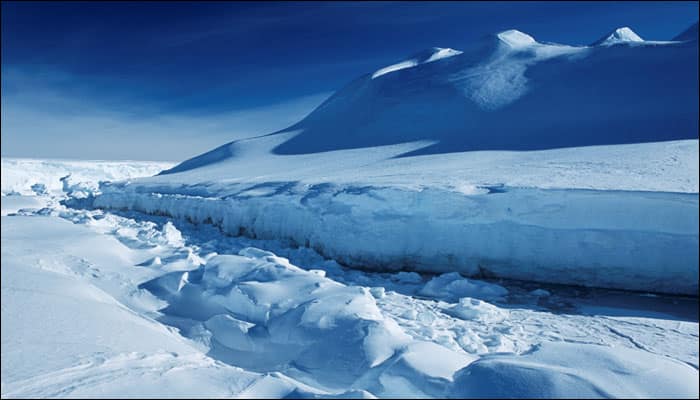Washington: Climate change and its haunting effects are far from over, however, the ice in the Antarctic region tells a different story.
In the previous year, NASA had released a shocking statement saying that ice in the Antarctic was actually increasing, as compared to the decreasing levels in the Arctic.
The revelation led to many people wondering about the reason for the phenomenon and also sent scientists and researchers into a tizzy to find its cause.
Now, the US space agency finally has an answer. The geology of Antarctica and the Southern Ocean are responsible, according to a NASA-led study.
The study found that two persistent geological factors -- the topography of Antarctica and the depth of the ocean surrounding it -- are influencing winds and ocean currents, respectively, to drive the formation and evolution of Antarctica's sea ice cover and help sustain it.
The researchers analysed radar data from NASA's QuikScat satellite from 1999 to 2009 to trace the paths of Antarctic sea ice movements and map its different types.
Their analyses revealed that as sea ice forms and builds up early in the sea ice growth season, it gets pushed offshore and northward by winds, forming a protective shield of older, thicker ice that circulates around the continent.
The persistent winds, which flow down slope off the continent and are shaped by Antarctica's topography, pile ice up against the massive ice shield, enhancing its thickness.
This band of ice, which varies in width from roughly 100 to 1,000 kms, encapsulates and protects younger, thinner ice in the ice pack behind it from being reduced by winds and waves.
Older, thicker sea ice returns a stronger radar signal than younger, thinner ice does. They found the sea ice within the protective shield was older and rougher (due to longer exposure to wind and waves), and thicker (due to more ice growth and snow accumulation).
As the sea ice cover expands and ice drifts away from the continent, areas of open water form behind it on the sea surface, creating "ice factories" conducive to rapid sea ice growth, the researchers said.
The study was published in the journal Remote Sensing of Environment.
(With IANS inputs)
















